Original URL: https://www.theregister.com/2014/03/28/sony_xperia_z1_compact/
Little pink handjob: Sony's Xperia Z1 Compact
Sometimes size really doesn’t matter
Posted in Personal Tech, 28th March 2014 09:02 GMT
Review For the last 18 or so months, if you'd wanted a high-end Android smartphone you’ve had to make do with something a bit on the large size. The HTC One, Samsung Galaxy S4, LG G Flex, Nokia 925, Sony Xperia Z1 all have one thing in common: they are big old Hectors compared to Apple’s iPhone 5S.
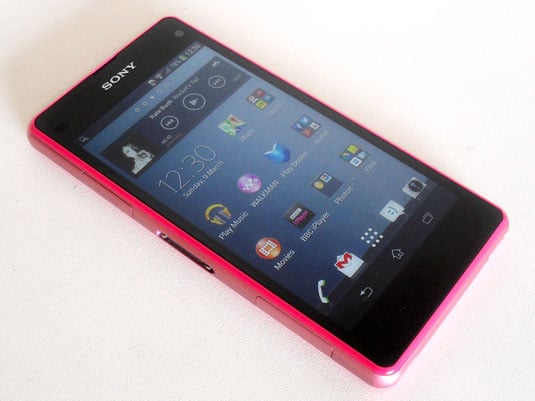
Sony Xperia Z1 Compact is easy on the eye and very well made
Of course, all those handsets I’ve listed have larger screens than the iPhone. But what if you want a cutting edge, powerhouse Android blower in a form factor closer to what Apple has to offer? Enter Sony with a device whose name couldn’t be more descriptive if it tried: the Xperia Z1 Compact is exactly that. A compact Xperia Z1.
To cut to the quick, Sony hasn’t entirely managed to make the Z1 Compact as small or as light as the iPhone 5S. At 137g it weighs 25g more and is 3mm taller, 6.5mm broader and 2mm thicker. But then it has got a larger screen than the iPhone, 4.3 inches compared to 4.0. It’s a sharper display too. Sure, it only has 720 x 1280 pixels but spread across a 4.3-inch diagonal, that results in a pixel density of 342ppi compared to the iPhone’s 326ppi.
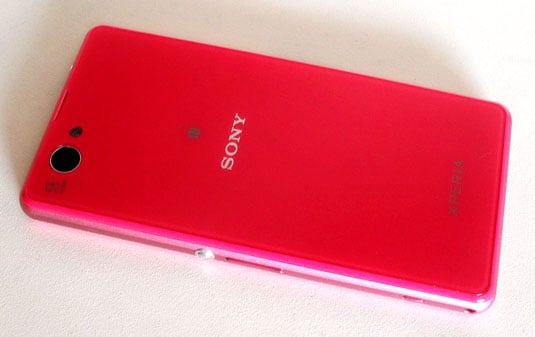
Very pink, and a very nice camera
You could argue that in keeping with its “same but smaller” ethos, the Z1 Compact should have a 1080p display like its big brother. Yet I find on screens below 4.5 inches (actually, I’d push that number as high as 4.7), the difference is very nearly imperceptible. By demanding a higher resolution you are just making the chipset push more pixels around in the name of spurious bragging rights.
Now when I reviewed the Xperia 1 proper and waxed lyrical about the screen, several readers came down on me like a ton of bricks for not being more critical of the screen’s viewing angles. Having revisited the Z1, I’ll grant they had a point. A small point, but a point none the less.
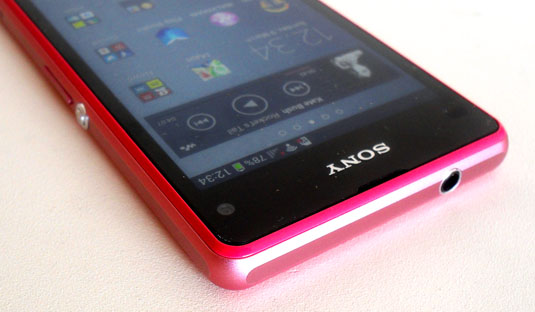
2MP web cam and open 3.5mm audio jack
With that in mind, I’m happy to report that the Z1 Compact’s Triluminous LCD panel seems to have addressed this particular issue. It’s still not absolutely as strong as the iPhone 5’s IPS panel or the new Motorola Moto X’s AMOLED screen in the Viewing Angle Chase from Kempton Park, but you have to hold the Z1 Compact at a deliberately absurd angle to detect even the slightest hint of contrast shift.
In all other regards – contrast, colour saturation and brightness – the Z1 Compact’s screen is every bit as good as the Z1’s, and that means very good indeed, and there’s even an option to manually adjust the display’s white balance. In a nutshell, it’s the best Sony has ever fitted to an Xperia smartphone and it’s one of the best smartphone screens around full-stop. The only area where it is bit middling is legibility in direct sunlight.
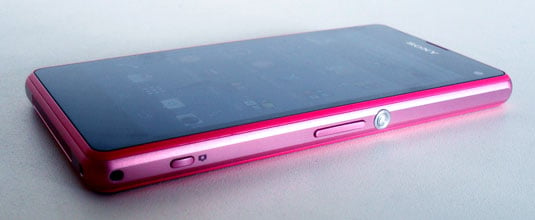
Lovely on-off switch and small camera button
Physically, the Compact holds true to the current Xperia Z design language. The excellent, easy to find, use and behold chrome-effect power button sits in the middle of the right-hand side with the volume rocker conveniently placed just below. You also get a handy physical camera button further down the same side, although it could do with being rather larger.
Flappy nerds
The Compact also boasts the same IP58-rated resistance to water, grit, dust and miscellaneous muck, which means flappy doors are needed to keep crud out of the SIM, micro USB and microSD card slots. Thankfully, the 3.5mm audio jack on the top manages without a plug and the flappy doors are easily opened – even by the chronically short of fingernail and patience.
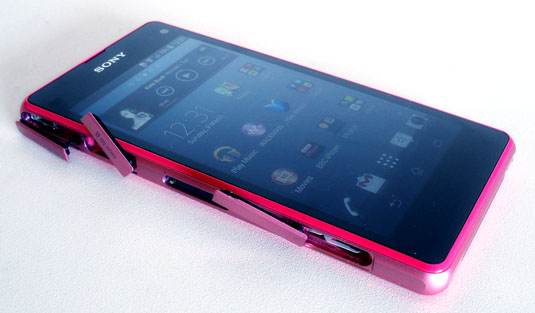
Lots of doors and a docking connector
I do have one hole to pick though. The left-hand side of the Compact houses the SIM, memory card and micro USB port cover flaps and the docking connector. That means that if the Compact is docked to charge you can’t access the MHL/USB-On-The-Go equipped USB port, which seems a bit daft.
Of course, if you don’t buy the Sony Xperia dock, this failing is irrelevant, and it’s not as if many (any?) other Android phones even have a docking connector. The bottom edge of the Compact is taken up by a competent if not particularly loud loudspeaker, while in the lower right corner you’ll find a lanyard eye, something else not found on most of the competition these days.
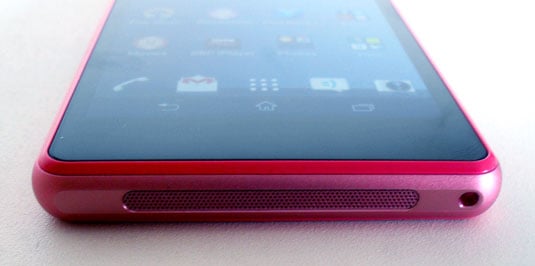
The speaker is competent but not very loud
Like the Xperia Z, Z1, Z1 Ultra et al, the Z1 Compact has a fixed battery. Rail all you like but the battle to make handset makers opt for user-replaceable batteries has, I fear, been lost. If you want one, buy a Samsung; it’s just about your only choice. And I can’t see Sammy sticking with the concept for long as it’s one of the reasons people sometimes accuse its top-end phones of feeling flimsy and cheap.
That’s something you can’t say of the Z1 Compact. With its glass front, toughened plastic back (which looks and feels just like glass) and one-piece anodised aluminium frame, it’s a very solid and attractive bit of kit. It’s also available in four colours, including, as you can see from these photographs, a rather questionable pink.
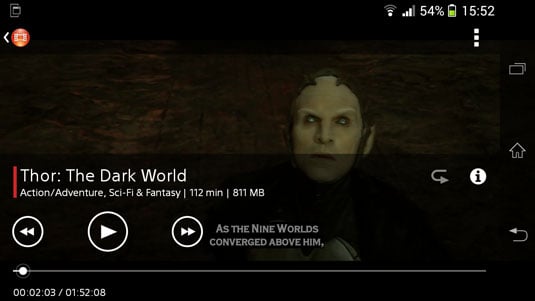
Quality video player even supports subtitles
The laws of physics demand that the Compact has a smaller battery than the Z1 but at 2,300mAh (down from the Z1’s 3,000mAh) it’s still a respectable capacity for a device of this size. In my experience, it will easily see you through two days of medium-to-heavy use. In tests, looping a 720p MP4 video drained the Z1 Compact's battery in nine hours 25 minutes, which in my book is rather more than acceptable, and only 30 minutes shy of what the Z1 proper managed.
Elsewhere, the Compact uses the Z1’s top-shelf components, so you get the same 2.2GHz quad-core MSM8974 Snapdragon 800 chipset with 2GB of RAM and the Adreno 330 GPU. This gives the Compact more power and performance than you will ever have any real need for. There’s also the same basic 16GB of storage backed up by a memory card slot.
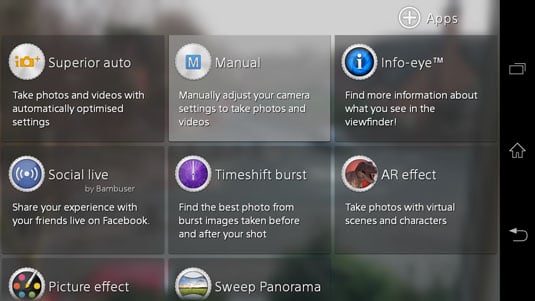
Camera app has a few tricks up its sleeve
The camera is also the same featuring a 20.7Mp, 5248 х 3936 pixel resolution, with a 1/2.3-inch sensor and an LED "flash" used in the Z1. I said more than enough about this chipset and camera in my review of the Z1, so I’ll spare you any repetition other than to say it’s a very powerful device that can take a very nice photograph.
Out to launch
As per the Z1, the Compact ships with Android Jelly Bean 4.3 with a KitKat 4.4.2 update scheduled for the not-too-distant future. Sitting on top of Android is Sony’s Xperia launcher. This is starting to look and feel a bit long in the tooth and offers nothing like the extra functionality of Samsung’s TouchWiz or LG’s Optimus UI launchers, the latter being in my opinion the best OEM Android overlay current available.
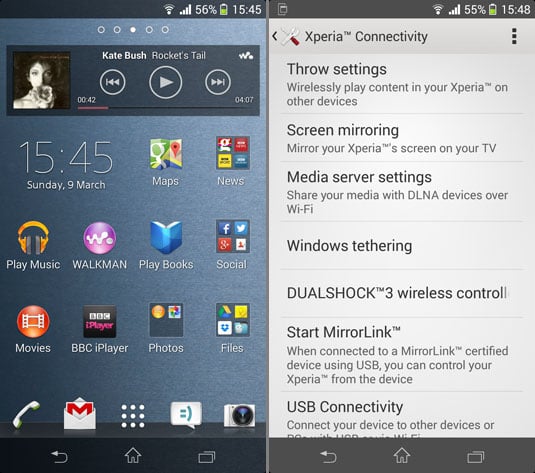
Xperia launcher short on UI features (left) but connectivity is top notch (right)
The Xperia launcher’s "small apps" are arguably a bit pointless on a 4.3-inch screen and while Sony’s media apps for music, video and photographs are still excellent examples of their kind, they lack the trick functionality that Samsung and LG’s equivalents offer like in-window playback. Still, on a 4.3-inch display this is not the end of the world.
Everything else is similarly Z1-ish, down to the Cat4 4G/LTE cellular connectivity, NFC chip, ANT+ support, dual band 802.11ac Wi-Fi, v4.0 Bluetooth, RDS FM radio and the absence of an IR transmitter. Like the Z1, the Compact has active noise cancellation with a dedicated microphone so the call quality and the signal reception too, were bang on the money. Lest we forget that 2Mp webcam on the front not only takes a cracking selfie but can record video at 1080p and 30f/s.
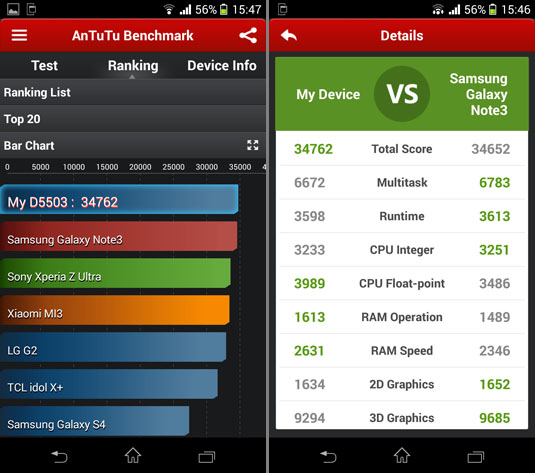
AnTuTu results reveal a seriously powerful chipset for such a small phone
The catch with the Z1 Compact is that it costs only little less than the Z1 proper – a mere £30 less if bought direct from Sony. In many respects, that seems fair, as unlike almost every other junior phone on the market, the Sony Xperia Z1 Compact isn’t designed to look like a range-topper yet be cheaper thanks to a massively inferior spec.
You just have to think of anything made by Samsung or HTC with the word “mini” in its name and you’ll get the idea. By contrast, the Z1 Compact offers the same flagship gubbins in all the important areas but wrapped up in a package that’s easier to slip into your pocket.
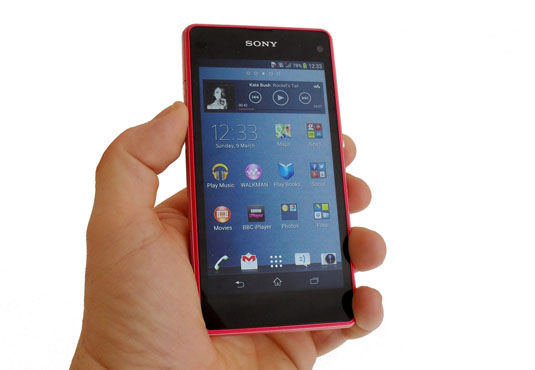
Less of a handful than any other flagship droid
Those niceties aside, personally, it’s not ideal for me as my eyesight predicates a larger screen these days – style be damned. Yet for those with greater visual acuity or whose vanity doesn’t prohibit the use of reading glasses, I’d say the Xperia Z1 Compact offers a compelling alternative for anyone looking at the iPhone 5S for reasons of design, size and build quality rather than operating system preference.
The Reg Verdict
Albeit without a full HD display, the Z1 Compact squeezes all the high-end technical goodies usually found in monster Android überphones into a stylish, well made and altogether rather neat little handset, both aesthetically and figuratively.
Despite being £100 cheaper than the 16GB iPhone 5S, it’s not exactly inexpensive. Yet in terms of offering the maximum technical bang for the minimum spatial buck, it’s the first Android phone to take the fight to the iPhone 5S’s diminutive door. It’s just a bit of a shame that Sony’s Xperia launcher and app suite is falling behind what’s on offer from other Android OEMs like Samsung and, more particularly, LG. ®